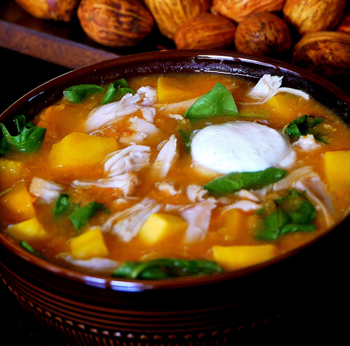 People who love barbecue really love barbecue, and will go
to great lengths to find the perfect ribs. I’m one of those, so I was
thrilled to be invited to judge The Best in the West Nugget Rib Cook-Off in Sparks, Nevada.
People who love barbecue really love barbecue, and will go
to great lengths to find the perfect ribs. I’m one of those, so I was
thrilled to be invited to judge The Best in the West Nugget Rib Cook-Off in Sparks, Nevada.
For die-hard barbecue lovers and novices alike, this kind of cook-off is a slice of pork heaven.
Instead of driving around the country to sample regional styles of
barbecue, all I had to do was take a three-block stroll down Victorian
Avenue in front of the Nugget for some of the best ribs in the country.
Pit masters competed from all over the country, cooking up slab after
slab of pork ribs in pick up-sized smokers and finishing them off on
10-foot-long wood-fired grills. Some hailed from legendary barbecue
states like Texas, South Carolina, and Kansas. But many, many others
came from states that folks rarely associate with this style of
cooking—we’re talking all the way from California to Minnesota,
Pennsylvania and, yes, even New Jersey.


 Yep, the kids have elevated me to the likes of Albert Einstein. Up until yesterday they thought of me as dull, boring, blah. I couldn't be more of a plain Jane to them.
Yep, the kids have elevated me to the likes of Albert Einstein. Up until yesterday they thought of me as dull, boring, blah. I couldn't be more of a plain Jane to them. Summer is the season for salads. Some days it just gets too hot to turn
on the stove. And you never get quite as hungry on those days anyway. A
salad for dinner makes perfect sense. Still I am always challenged to
figure out how to make salad feel like a meal. Especially without
adding fish or grilled meats.
Summer is the season for salads. Some days it just gets too hot to turn
on the stove. And you never get quite as hungry on those days anyway. A
salad for dinner makes perfect sense. Still I am always challenged to
figure out how to make salad feel like a meal. Especially without
adding fish or grilled meats.  This recipe is actually Ina Garten's recipe for her 4th of July Flag cake. It is one of the BEST tasting cakes and frostings out there.
This recipe is actually Ina Garten's recipe for her 4th of July Flag cake. It is one of the BEST tasting cakes and frostings out there.
